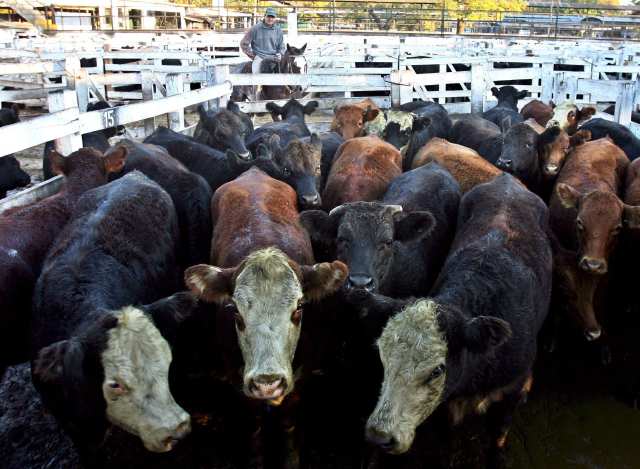
Agricultural News
Peel Questions Whether Beef Cow Slaughter Declines are Sufficient to Allow Herd Expansion
Mon, 30 Apr 2012 14:52:29 CDT

The effects of last summer's drought continue to unfold and will continue for some time yet to come says Oklahoma State University Extension Livestock Marketing Specialist Derrell Peel. In this week's Cow/Calf Newsletter, Peel looks at how far beef cow slaughter rates have to decrease until an expansion in the cow herd can take hold.
In the aftermath of last year's drought, it is taking some time to determine where the industry is with respect to stopping herd liquidation and beginning the process of herd rebuilding. The first consideration is that the drought continues in force in the Southwest; in parts of the intermountain Rockies; and in the Southeast. Some additional drought forced liquidation is occurring in these regions, though the magnitude of the impacts on the broader market is much smaller than last year. The aggregate numbers suggest that an 18 to 20 percent year over year decrease in beef cow slaughter, combined with the slight increase in beef replacement heifers reported on January 1, will be needed to stop beef cow liquidation in 2012. Even sharper decreases in beef cow slaughter will be required before any beef cow herd expansion is possible.
Beef cow slaughter is currently down 6 percent from last year, not enough to stop additional liquidation. However, the drop in beef cow slaughter has been much more pronounced lately. In the last 4 weeks or reported slaughter data, beef cow slaughter has averaged nearly 18 percent less than the same period last year. In the most recent data, weekly beef cow slaughter was 26 percent less than one year ago. If the current reductions in beef cow slaughter persist for many weeks of the year, stabilization of the beef cow herd inventory, or even fractional growth in beef cow numbers, is possible in 2012.
Of course, the slaughter cow market is very strong and will continue to bid for cows. In Oklahoma, slaughter cow prices are currently around $90/cwt. for average dressing breaking and boning cows, with high dressing cows bringing nearly $100/cwt. The year to date decrease in beef cow slaughter is being moderated by a 1.7 percent increase in dairy cow slaughter, resulting in an overall decrease in total cow slaughter of 2.3 percent so far this year. A continued sharp decrease in beef cow slaughter will pull the total cow slaughter lower and continue to support strong cull cow prices.
It is more difficult to say anything about heifer retention. The cattle on feed data appear to be a mixed set of indications. The April 1 on-feed total was up 2 percent but included 4 percent more heifers while steers on feed were up less than one percent. In total, heifers make up a slightly higher percent of cattle on feed compared to last year. The picture is widely varied across states. In Texas and Kansas, where total cattle on feed is unchanged to lower than last year, the on-feed inventory consists of increased heifers on feed and less steers. This may be related to the drought effects on regional cattle shipments during liquidation and the timing of steer versus heifer sales during liquidation. In some other states, such as Idaho and South Dakota, on-feed inventories consist of fewer heifers and more steers, which could be an indication of heifer retention. In Nebraska the large increase in feedlot inventories consists of both more steers and heifers.
In the end, I don't think much can be said about heifer retention from the current cattle on feed numbers. Placements of steers versus heifers in the next few months may provide stronger clues until replacement heifer numbers are reported later. The mid-year Cattle inventory report in July may be anticipated more this year than sometimes for clues to heifer retention in 2012. Weekly cow slaughter will monitored as closely this year for the magnitude of year over year decreases as it was last year for the magnitude of increases related to drought impacts.
WebReadyTM Powered by WireReady® NSI
Top Agricultural News
More Headlines...



















